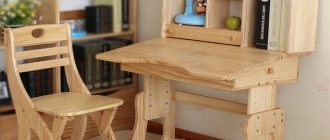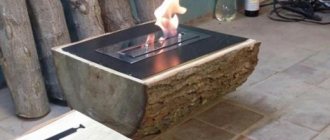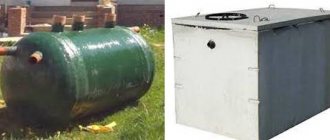To prune or not to prune - this question causes rose lovers no less doubts and dilemmas than Hamlet’s “To be or not to be?” How to prune roses, when to cut, low or high, and is it worth it, because last year they bloomed so beautifully... Literature and the Internet also do not provide clear answers, and, what is even worse, they offer diametrically opposite methods. We will try to give the simplest, rational tips for pruning roses.
First of all, you should remember one very important rule - we don’t prune in the fall!
Absolutely nothing, this is not necessary. You can never predict what the winter will be like; leave the shoots as they are so that you have something to prune in the spring.
A small exception can be made to this rule - if the rose grows next to the path and the shoots are simply in the way, then you need to trim them for convenience. However, in other cases, avoid autumn pruning.
When warmer, spring days arrive, you begin to work in the rose garden. Some people believe that pruning should begin with the appearance of the first green leaves, but this can also be done. But essentially, whether you prune your roses a week earlier or a week later doesn't really matter.
Long (high), or weak, pruning of roses
Recommended for vigorous climbing and tall hybrid tea roses. In this case, the shoots are shortened slightly: at the level of 8-15 buds from the base of the bush. Long pruning is carried out when planting seedlings in spring.
In addition, there is combined pruning - when the shoots of one plant are shortened to varying degrees. With the help of this pruning, bushes of some varieties of floribunda roses are formed. This allows you to give the plants an elegant shape.
As well as sanitary pruning, which is carried out throughout the growing season in order to prevent diseases. At the same time, affected, dry, frozen and weak shoots are removed, the stems are shortened to healthy (green) tissue.
Don't spare the roses! Nothing will grow from a damaged (brown) and dry branch anyway.
How to do it correctly: subtleties, step-by-step instructions (important: read to the end)
Covering roses is not as easy as it might seem at first glance. The queen of the garden rightfully requires a particularly caring attitude and the most painstaking care. There are several important nuances, without the strict implementation of which it will not be possible to properly prepare roses for a harsh (or not so harsh) winter.
Trimming
Perhaps pruning is the most controversial point in the autumn care of the rose garden, during the discussion of which many copies are broken. Not all gardeners are sure of the need for this event, so they send their bushes to winter in their natural, that is, unpruned form.
But still, most rose growers are sure that roses must be pruned in late autumn. A properly trimmed plant becomes stronger, its frost resistance increases, and the crown is better ventilated.
First, in September-October, rose bushes, and especially those “unlucky” ones who do not suspect that winter is ahead, need to tear off the leaves from the lower half. This way the plants receive a kind of signal about the onset of autumn, which contributes to better ripening of the wood.
The entire crown cannot be completely exposed until it is covered for the winter. Roses still need green mass, because while it is warm outside, photosynthesis occurs in it and the necessary useful elements accumulate in the root system. In addition, let the nutrients from the leaves flow smoothly into the stems, thereby increasing their resistance to cold.
Leaves left under cover significantly increase the likelihood of putrefactive processes developing and stems becoming overheated. In addition, pests and pathogenic microorganisms often settle on them for the winter.
Shortly before the expected day of covering work, the rose bushes are pruned, removing all buds, flowers, remaining leaves, as well as young immature growth, since they will not survive the winter anyway. For sanitary purposes, plants are freed from diseased, dry, weak and non-viable stems.
In the future, it is most logical to trim the branches exactly to the height of the future covering structure, so that the bush can be completely hidden under it. Some people do just that. However, not all types of roses require more thorough late-autumn pruning.
Experienced flower growers advise:
- shorten polyanthus to 0.2-0.3 m;
- hybrid tea - up to 0.3-0.4 m;
- shorten floribundas to 0.4-0.5 m;
- climbing and ground cover can be cut off (pinched) the tops;
- Do not prune bush and park roses at all.
There is an unwritten rule that the older the rose bush, the higher it should be pruned. Use a sharp tool to avoid crushing plant tissue.
It is ideal if the pruning process takes place on a clear, fine day with a temperature of +2-0 degrees (since in severe frosts the stems become too fragile and often break).
Garbage collection
All plant residues and debris that have accumulated under the rose bushes during the warm season must be carefully raked out with a rake and then burned. This will help avoid fungal diseases, the spore pathogens of which love to settle on such organic matter.
Top dressing
At the very beginning of autumn (the first ten days of September) or even in the last days of August, it is necessary to feed the roses for the last time this season, since the supply of nutrients in the soil has been greatly depleted. During this period, phosphorus-potassium and magnesium-potassium fertilizers are required to promote better ripening of wood.
You can use any of the following:
- potassium magnesia - 15-25 g/bush;
- potassium monophosphate - 10-20 g/bush;
- potassium sulfate - 8-10 g/bush and double superphosphate - 8-10 g/bush;
- mineral complexes with a minimum nitrogen content, marked “Autumn” or “Autumn” (Fasco, Sotka, Florovit, etc.) - dosage according to the instructions.
If the weather is rainy and the soil under the rose bushes is damp, fertilizers are applied in dry form, simply scattering them over the surface of the ground. Then they are embedded a little into the ground with a rake. When there is little rain, the granules are first dissolved in lukewarm water (5 l) and applied under the bushes in liquid form.
Roses respond well to foliar feeding applied to the leaves. Only the concentration of the working solution needs to be halved.
Nitrogenous components are excluded at the end of the growing season, as they can cause increased growth of the above-ground parts.
What to process
Roses are, in principle, susceptible to various fungal diseases, and under winter cover an extremely favorable environment is created for infection. To avoid rotting of the stems and protect the bushes from fungus, it is necessary to carry out a pickling treatment.
You should think about how to treat plants before wintering for maximum effect. Rose bushes, sparing no leaves if they are still left, and the soil in the bush area must be sprayed with one of the antifungal agents:
- iron sulfate (3-4%);
- copper-containing preparations (CHOM, Oxychom, etc.) - according to the instructions;
- Bordeaux mixture (3%);
- fungicide (Strobi, Skor, Topaz, etc.) - according to the instructions for use.
Hilling
There is also no consensus on whether roses should be hilled. Many believe that this is absolutely necessary, since in this case the root system will be protected from frost. However, in wet weather, the powder (peat, soil, compost, etc.) becomes wet and freezes, encasing the stems in an icy shell.
The need for hilling depends very much on the type of soil and climate in a particular area. If the area is heavily planted with trees and the ground there is always damp, then it is better not to cover the bushes. After all, frozen backfill can easily damage the shoots.
Definitely, only plants of the first year of planting and those planted recently, in the fall, need to be hilled. Self-rooted roses obtained from cuttings require mandatory insulation of the root system, since their roots are very vulnerable to cold weather.
Roses grafted onto rose hips, which are usually sold in nurseries, tolerate frost much better, so they don’t need to be hilled. But the grafting site must be buried at least 4-6 cm; if it is located above the soil surface, then hilling is indispensable.
You cannot rake the earth from under these same bushes, throwing it under the base. After all, in this case, the peripheral roots are exposed and then freeze slightly. For hilling, you need to take only dry soil, taken from another place or purchased in a store.
Crouching to the ground
An alternative to pruning roses in late autumn is to bend the branches to the ground. Some gardeners practice this method. They claim, based on their own experience, that pruned plants winter worse.
The stems should be bent in still relatively warm weather, before frost sets in. In cold weather, wood becomes brittle, bends poorly and breaks easily. So that the shoots do not immediately break, but get used to a horizontal position, they need to be tilted gradually.
Technology:
- The branches are tied several at a time into small bundles.
- Using a rope, they are fixed to brackets or hooks driven into the ground.
- Then they begin to tilt and attract the bunches to the soil, doing this in several passes.
- The branches are finally fixed when they are almost at the ground or at the desired height.
In the place where the rose shoots come into contact with metal elements, it is advisable to place an insulating material (for example, a piece of polystyrene foam) or wrap the bunch with fabric. Bent bushes should not lie on the cold ground; it is better to lay the branches on a backing made of boards, roofing felt, thick cardboard, etc.
Varieties with thick, rigid stems that cannot be bent must be cut off before sheltering. Experienced rose growers shorten the shoots to about 0.4 m.
Frame construction
Most often, a frame structure is installed over bushes of properly prepared roses, onto which a covering sheet is then stretched. To construct the frame, plastic or metal arcs, wooden blocks, plywood panels, etc. are used.
Materials used
To insulate a rose garden for the winter, you can use a variety of materials and even improvised means.
Lapnik
A traditional natural material, used since ancient times to cover various wintering perennials. Coniferous branches perfectly retain snow, and numerous needles create an air layer that retains heat coming from the ground.
The specific pine aroma repels rodents, and the pine needles themselves are an excellent antiseptic that prevents the emergence and spread of various infections. In addition, roses are well ventilated under the spruce branches.
Sometimes acquiring the right amount of spruce branches is quite problematic, because not everyone has a coniferous forest behind the fence.
Sackcloth
Rough natural canvas provides good air exchange, but it is not very effective against frost. During thaws, when it gets wet, it becomes saturated with moisture. After a cold snap, wet burlap binds the bush with an icy shell. As a result, the plant may freeze.
Recently, burlap is rarely used as a single-layer shelter. In addition to it, a polyethylene lining is usually used to protect it from getting wet.
Cardboard
Excellent insulating material that protects from frost and retains heat. However, cardboard is short-lived because it gets wet and limp from water. It is better to lay it as a layer between other materials to create air gaps.
It is very convenient to cover rose bushes with upside down cardboard boxes, but you will have to put plastic on top.
Garden batting
Durable rolled fabric that lasts for many years. Garden batting, which among gardeners is more often called obernite, does not burn or rot, and perfectly protects delicate roses from sunburn, from frost and from sudden temperature changes, freezing rain and other adversities.
Obernite has high breathability, which prevents damping off and rotting of plants. Garden batting is a breathable material, but there is still no need to add additional bedding under the bushes when using it.
Straw or hay
They hold back snow perfectly and protect rose bushes from the cold. But the plant layer cakes, gets wet from the snow, freezes, forming a dense layer that does not allow air to pass through, and then, thawing, rots. In spring, the ground underneath warms up very slowly.
A significant disadvantage of using hay or straw is that mice love to build their nests in it.
Sawdust or shavings
Free (for many summer residents and owners of their plots) backfill that perfectly retains heat and protects the roots of roses in winter. However, when wet, sawdust begins to rot, especially during thaws. In places of contact with the stems, stripes of mycelium appear and the plant rots along with the sawdust. All this is fraught with the death of bushes.
You can use a sawdust mound to insulate roses, but this must only be done at an established negative temperature and so that wood waste does not touch the stems.
Polyethylene
Film is the most popular covering material used by rose growers for several decades. It perfectly protects from precipitation, wind and cold. But due to the lack of breathability, condensation accumulates under the polyethylene cover.
Excessive humidity inevitably leads to damping off and rotting of branches. Therefore, it is necessary to have ventilation gaps between the film and the soil to ensure air exchange. You can avoid negative consequences by partially opening the shelter when the temperature rises.
Nonwoven agricultural materials
Specialized thin polymer synthetic materials, widely used in covering work. Non-woven fabrics (spunbond, lutrasil, agril, agrospan, etc.) serve for a long time, perfectly transmitting moisture, air and sunlight.
For winter, light agrofabrics are used that do not heat up from the sun. On sale you can find ready-made caps of various sizes and configurations that are placed on plants. If you wish, you can sew rose covers yourself.
Construction Materials
When covering, it is not forbidden to use available means in the form of all kinds of building materials: pieces of roofing felt, boards, plywood, sheets of iron, slate, polycarbonate, etc. Even large plastic bottles and canisters with the neck cut off are used.
Covering methods of different types
The choice of a specific shelter option for garden roses depends on the available variety and variety of crop, as well as on local climatic conditions.
Climbing
Long lashes must first be removed from the supports. This needs to be done in advance, 3-4 weeks before the final shelter for the winter, while it is still warm. In cold weather, it will no longer be possible to bend the weaving woody shoots without breaking them. The branches need to be pulled as close to the ground as possible, doing this carefully and gradually.
The algorithm of actions is as follows:
- First, the stems are unhooked from the supporting structures and simply left hanging freely so that they bend under their own weight for a couple of days.
- Then they are tied in 3-4 lashes (or more are possible) into bundles and gradually pulled towards the soil. They do this carefully in several passes, each time lowering the branches lower and lower until they are on the ground.
- If the lashes have reached the very ground, then an insulating bedding (boards, pieces of slate, plywood, thick cardboard, etc.) is placed under them so that they do not lie on the frozen ground.
- The stems are fixed in the desired position by pinning them with staples.
- Above the bent bushes of climbing roses, a frame of arches or a structure of two wooden panels is installed in a “house”.
- From above, the entire structure is covered with agro-fabric, not forgetting to fix the canvas around the perimeter.
In areas where there is usually little snowfall, you can get by in a simpler way:
- Lay the lashes on a bed of pine needles or spruce branches.
- Cover the top with the same spruce branches.
- Cover the entire mass with spunbond or other non-woven agricultural material.
In the south, there is usually no need to cover roses, but where light frosts do occur, climbing varieties are wrapped with a covering cloth without removing them from their supports.
Bush
For bush roses, several options for winter shelter are acceptable:
- Build a kind of hut over the plants, made up of two wide panels or knocked together wooden panels. Close the ends. Then cover the “house” with film to protect it from precipitation. The ends can always be folded back (for ventilation). This method is good for the middle zone and northern regions.
- Hill up the bush high and cover it with spruce branches. This shelter option is suitable for warm winters, when severe cold does not occur. If a serious cold snap is suddenly expected, the roses can be temporarily additionally covered with a wooden or cardboard (thick-walled) box.
- Place the stems on the ground, previously covered with insulation (boards, cardboard, etc.), secure them with staples. Then cover the bushes with pine needles or cover them with spruce branches. Install pegs or arcs around the perimeter on which to stretch the film, securing its edges with stones or bricks.
The so-called air-dry shelter is indispensable in regions with a harsh climate (Siberia, the Urals), but requires regular ventilation.
Standard
Standard roses are insulated for the winter in this way:
- Young plants, whose trunks still bend well, are carefully bent to the ground and secured with pins or staples. Spruce branches are placed under the bottom and on top of the stems, then covered with roofing felt or film to protect them from moisture.
- Mature plants that cannot be bent down are covered differently. Place a fabric cover or bag over the crown and pour dry leaves or pine needles inside. Then tie it with a rope near the trunk so that the backfill does not spill out. Wrap the standard itself with several layers of burlap or spunbond.
- Where winters are especially harsh, you will need to install some kind of frame structure made of roofing felt or boards around the bush, and cover it with polyethylene on top. It is advisable to pour insulation inside the shelter (sawdust, dry leaf litter, etc.).
Park
Park roses, which are distinguished by their increased frost resistance, are never covered in warm regions. Only young specimens can be pestered, just in case. In the middle zone, it will be quite enough to cover the bushes with spruce branches to retain the snow cover.
In cold and northern regions, you will have to build a more solid shelter from wooden boxes made of plywood panels or boards. To prevent moisture from getting inside the structure, it must be covered on top with a waterproofing material (tar paper, film, slate, etc.).
Floribunda and hybrid tea roses
For hybrid tea roses and floribunda roses, which are greatly shortened in height, it is not at all difficult to build an air-dry shelter:
- Enclose the bush with a frame in the form of a cone. You can knock it out of wooden blocks or weave it out of thick wire.
- Stretch a roll of non-woven insulation over the frame, securing it to the structure with ropes.
- Cover with film that will prevent moisture and precipitation from entering.
- Sprinkle the bottom of the film with earth or press it down with bricks and boards.
Instead of a frame, you can use large plastic containers in which holes are made for ventilation (ventilation). After the onset of cold weather, it is important to cover the containers with plastic.
Spring pruning of roses
Before spring pruning, winter cover is removed from the plants, debris and all old leaves are removed, and the mulch is raked away. Then the roses are pruned when warm weather sets in, the buds swell, but the shoots have not yet begun to grow. At this time, sanitary pruning is carried out.
If the bush is too thick, thin it out and leave 4-5 strong, healthy stems. It is important that all cuts are made with sharp pruning shears, which minimally injure the plant. In addition, all shoots are cut at an angle of 45 degrees, moving upward from the bud by about 5 mm.
In spring, it is recommended to prune roses of any kind, since at this time it is important to remove all old and dry shoots so that the plant does not waste its energy on them, but strives to grow new ones.
In addition, during spring pruning, the bush is given the desired shape and shoots are trimmed to stimulate flowering.
In spring, shoots are pruned to healthy tissue.
What to prepare in advance?
To speed up work and increase productivity, you need to prepare. Suitable tools and clothing will make the job easier.
Thick, durable gloves, thick garden trousers, and a long-sleeved jacket will provide good protection for your hands and feet from thorns.
When pruning roses, you must wear protective equipment and use special gardening tools.
A sharp pruner or scissors is suitable for this work.
Important! Transferring an infection from one branch to another is a common problem. Experienced gardeners recommend disinfecting tools with a solution of potassium permanganate or phytosporin. You just need to periodically dip the pruning shears in the liquid and continue working.
The cut areas are usually treated with garden pitch, coal or putty. This way the plant will not be afraid of fungus, insects and pests.
Summer pruning of roses
In the summer, sanitary and formative pruning of bushes is continued: wild growth, dried branches and faded flowers are removed, cutting the stem to the first five-leafed plant and a healthy bud. Roses older than 3 years in August often grow too many young shoots, which thicken the bush and create shadow inside it. This can lead to the development of fungal diseases, so during the summer you need to get rid of excess shoots.
Pruning roses after flowering
This is a very important summer pruning, so it’s worth mentioning separately. Removing faded inflorescences allows roses to prolong flowering and not waste energy on fruit formation.
On roses that produce several buds on one stem (floribundas, climbing climbers, scrubs), cut off the entire raceme above the top five-leaf clover.
In hybrid tea roses, which produce only one flower per stem, faded buds are pruned differently. In the first half of summer, the shoot is cut so that only 3-4 leaves remain above the soil level. This will promote the rapid growth of new shoots coming from the roots.
In the first half of summer, you can also prune the inflorescences of floribunda roses.
And in the second half of summer, only the wilted flowers themselves should be removed.
In climbing ramblers (which bloom on shoots of the second year), after flowering ends, the brushes are removed down to the first leaf. This will promote branching of shoots on which flowers will bloom next year.
Moisture-recharging irrigation
Do roses need to be watered in the fall? If autumn is rainy, then the bushes will have enough rainwater. On the contrary, during autumn showers you will have to drain excess water from the roots, because the abundance of water will give the roots a stimulus for development, but this is not required before winter.
If there is no rain in autumn, check the soil moisture under the bushes. If the soil is dry, then roses for the winter in the Moscow region can be watered at the very end of September or in the first ten days of October. In colder regions, at the end of September.
Water-recharging watering is important only in dry autumn in order to charge the roses with strength for the upcoming winter.
Important! In order not to cause diseases of roses, they cannot be watered under cover in winter, so do not be late with watering during drought.
General rules for pruning roses
It is important to trim rose stems correctly at any time of year. The oblique cut should be located approximately 5 mm above the bud.
A diagram of how to properly make cuts on rose shoots
If you want to get a spreading rose bush, trim the branches above the bud, which is on the outside. Then the new shoot will grow not into the center of the bush, but outward. And if you need to grow an upright bush with vertical shoots, prune to the bud, which is located on the inside of the stem.
In addition, it is necessary to take into account the age of the bushes. So, in annual plants, the shoot is cut off by about half.
In the second year, 2-3 restoration shoots are formed on each branch, which grow from the root collar. In no case should they be cut down to the ground, since they are the ones who provide the plants with lush flowering and longevity. Thus, two-year-old shoots are shortened by 2-3 eyes from the base, and annual shoots are shortened above the upper well-formed bud, located below the faded buds.
In adult roses (starting from the age of three), all dead and weakened branches and short shoots that grew after pruning the previous year are completely removed. In addition, to form good flowers, you should cut out all side shoots of any thickness growing towards the center of the bush.
What to do after?
It is recommended to treat the plant after all of the above procedures. The choice of product depends on the climate. There are two options:
- in cold weather (below +5), iron-containing preparations are used;
- at temperatures above +6 - copper-containing substances.
Important! Iron sulfate at warm temperatures can burn the bushes, and copper preparation at low temperatures will be useless.
After all the procedures, all that remains is to wrap the bushes, which will provide favorable conditions during winter “hibernation”.
Pruning hybrid tea roses
Hybrid tea rose bushes are pruned into a ball shape. In these plants, buds form on the shoots of the current year, so they are greatly shortened. On young bushes, 2-4 buds are left at a distance of 15 cm from the ground level, and on adults - 4-6 buds at a distance of about 20 cm. 2-4 buds are also left on the side shoots.
Pruning scheme for hybrid tea roses
In addition, the inner stems, which contribute to thickening, are removed from the center of the bush.
Hybrid tea roses are pruned every year.
Pruning floribunda roses
Roses from the floribunda group also need strong (short) pruning, otherwise a voluminous bush with weak stems and small flowers will grow. But to prevent the plant from quickly becoming depleted during severe pruning, a special method is used: some stems are made short in order to obtain early flowering, and annual basal shoots are cut to only 1/3 of the length.
Floribunda rose pruning diagram
2-3 buds are left on young side branches, and 3-5 buds on old ones. In this case, the old stems growing in the middle of the bush are completely cut out.
For floribunda roses, shoots are cut out every 10-12 days throughout the growing season, right up to sheltering for the winter.











